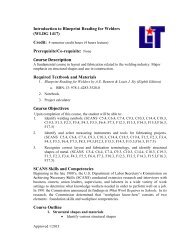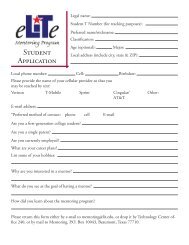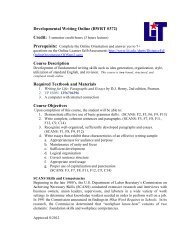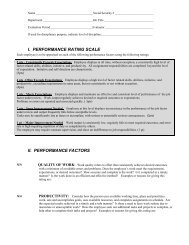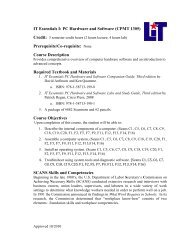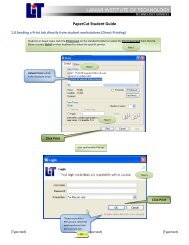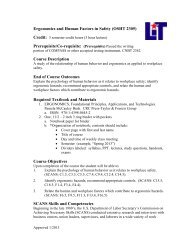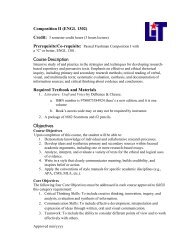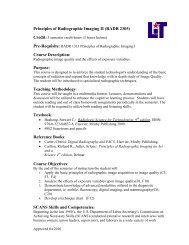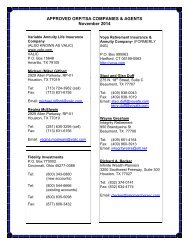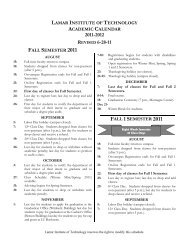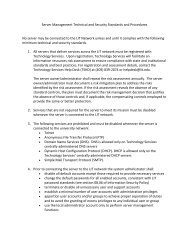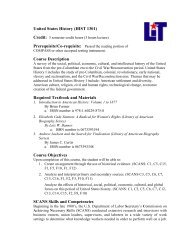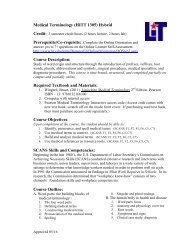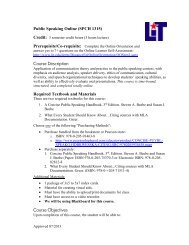LIT Master PLan PDF - Lamar Institute of Technology
LIT Master PLan PDF - Lamar Institute of Technology
LIT Master PLan PDF - Lamar Institute of Technology
Create successful ePaper yourself
Turn your PDF publications into a flip-book with our unique Google optimized e-Paper software.
appendices<br />
Appendix B<br />
Wayfinding and Signage<br />
Wayfinding is a two-stage process during which people<br />
(1) decide where they need to go and (2) execute their<br />
plan. Helping students, staff and visitors to facilitate<br />
this process makes a campus environment comfortable<br />
and inviting. The effectiveness <strong>of</strong> a wayfinding system<br />
is measured by how well the environment communicates<br />
with the wayfinder. Wayfinding issues should be<br />
resolved as part <strong>of</strong> the development <strong>of</strong> the campus<br />
master plan.<br />
Signage is an important part <strong>of</strong> wayfinding, but these<br />
two terms are not synonymous. Signs can even impede<br />
wayfinding when they:<br />
• Are difficult to read<br />
• Contain messages that are ambiguous or unfamiliar<br />
• Have reflective surfaces that create glare<br />
• Are hidden by obstructions<br />
In many cases, people do not read signs at all, but<br />
would rather ask directions. A comprehensive wayfinding<br />
system should include not only signs, but a<br />
number <strong>of</strong> other visual clues that will help people<br />
quickly grasp their current location and decide upon<br />
a logical way to get to other locations on campus. Important<br />
design elements that provide wayfinding clues<br />
include:<br />
• Identifiable arrival points<br />
• Unique streets, plazas or buildings that help create<br />
a cognitive map <strong>of</strong> the area<br />
• Memorable landmarks along travel corridors<br />
• Parking areas and walkways that are logical and<br />
convenient to destination points<br />
Campus signage and graphics should employ consistent<br />
colors and materials, be written in plain language,<br />
and display established pictographs. “You are here”<br />
maps should be located near pedestrian exits to parking<br />
areas and at major decision points. Maps should<br />
show the entire campus, with more detailed enlargements<br />
<strong>of</strong> the specific districts they occupy. The use <strong>of</strong><br />
memorable graphics and colors can help to “code” a<br />
district and make it easier to find, both on the map and<br />
on the physical campus.<br />
As renovations are executed within the existing campus<br />
environment, it is important to remove as much visual<br />
clutter as possible. Often, important signage and<br />
landmarks are rendered virtually invisible to students,<br />
staff and visitors because <strong>of</strong> visual overload. When<br />
there is too much to see, <strong>of</strong>ten we cannot see anything.<br />
Unnecessary signs, utility poles, overhead wiring and<br />
similar clutter should be removed whenever possible.<br />
Unsightly visual intrusions such as mechanical equipment<br />
and garbage dumpsters should be relocated or<br />
camouflaged. Earnest efforts to remove these distractions<br />
will result in a more pleasant environment that<br />
speaks clearly to students, staff and visitors alike.<br />
Campus wayfinding<br />
CAMPUS MASTER PLAN<br />
<strong>Lamar</strong> <strong>Institute</strong> <strong>of</strong> <strong>Technology</strong><br />
57



